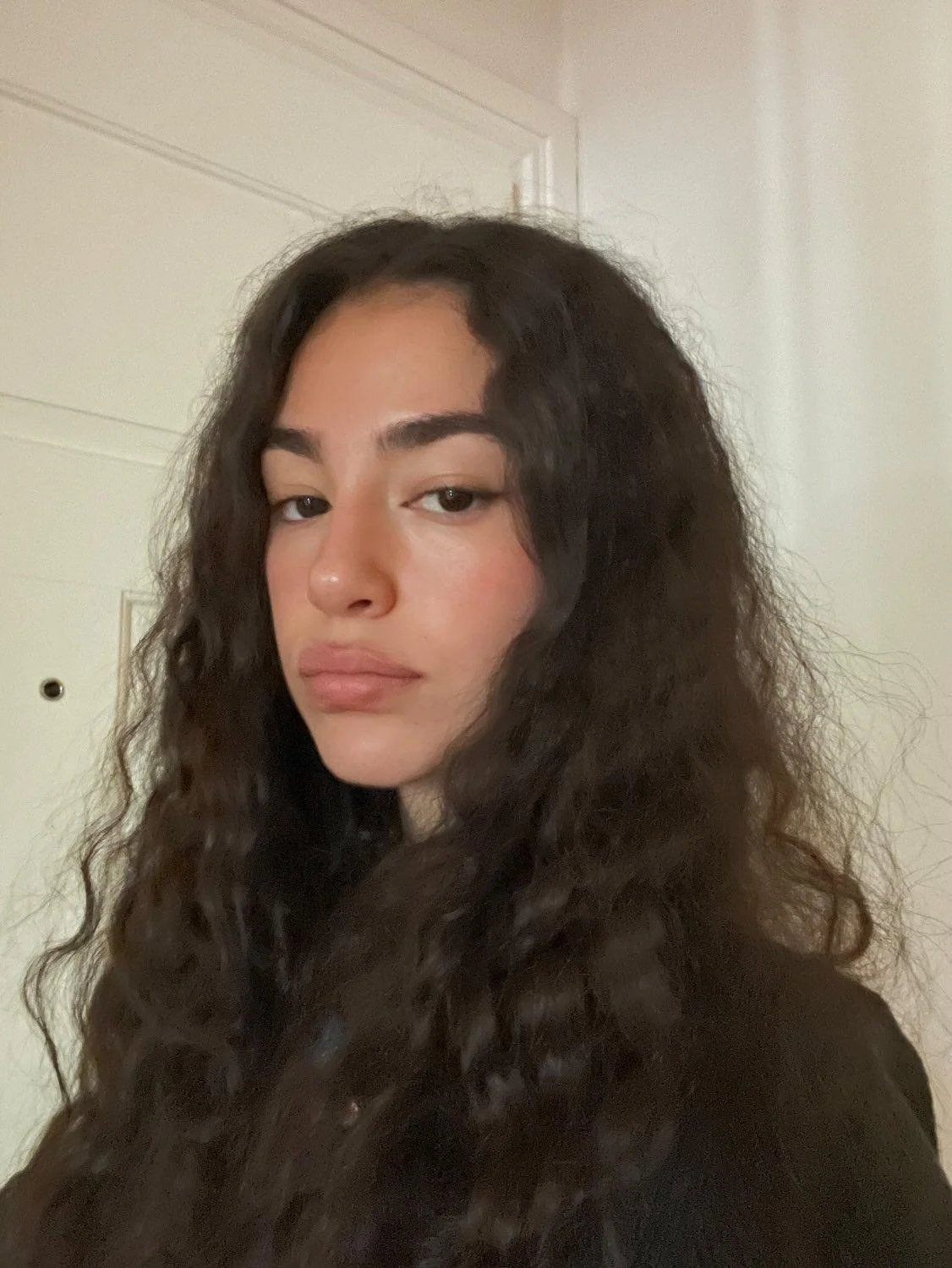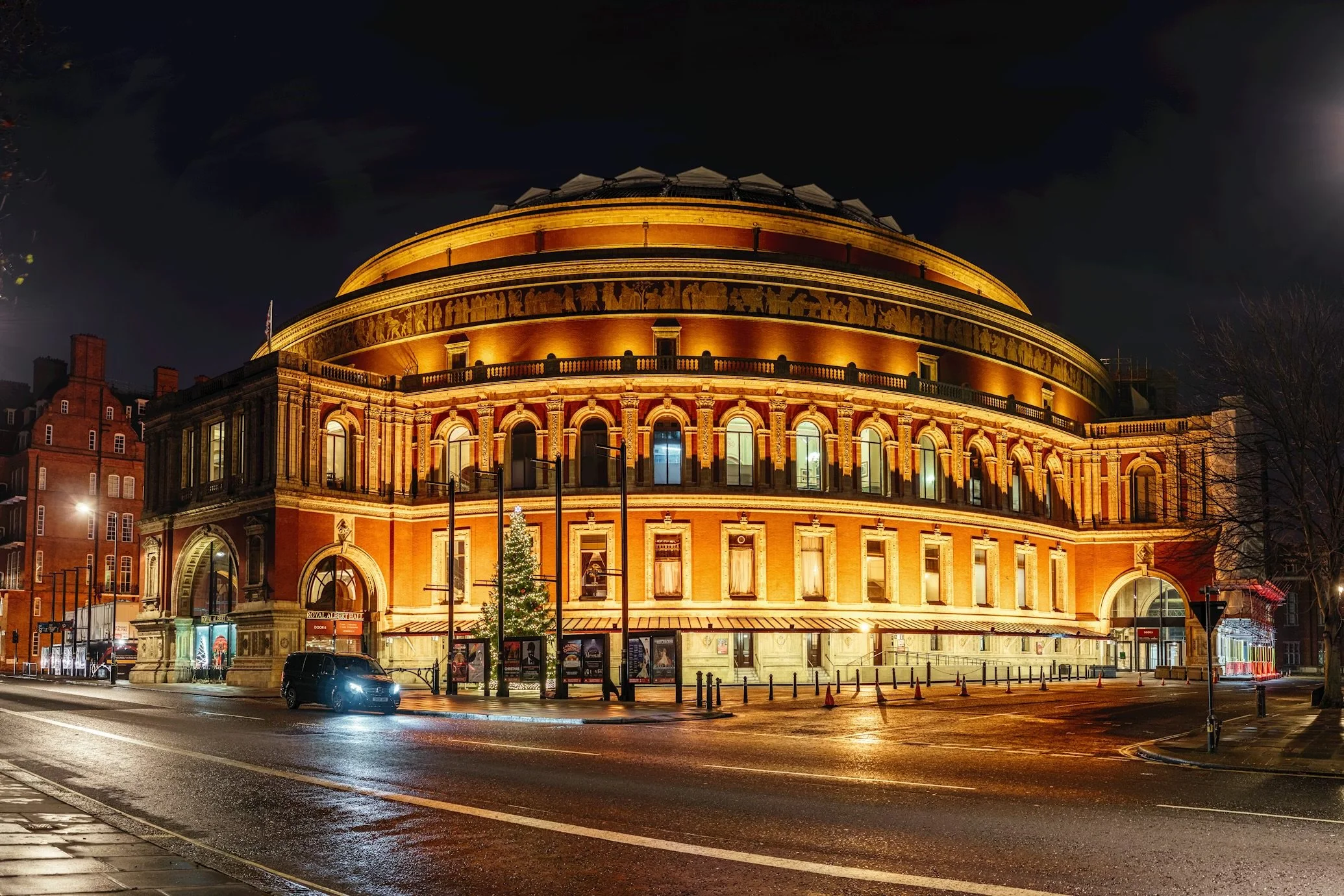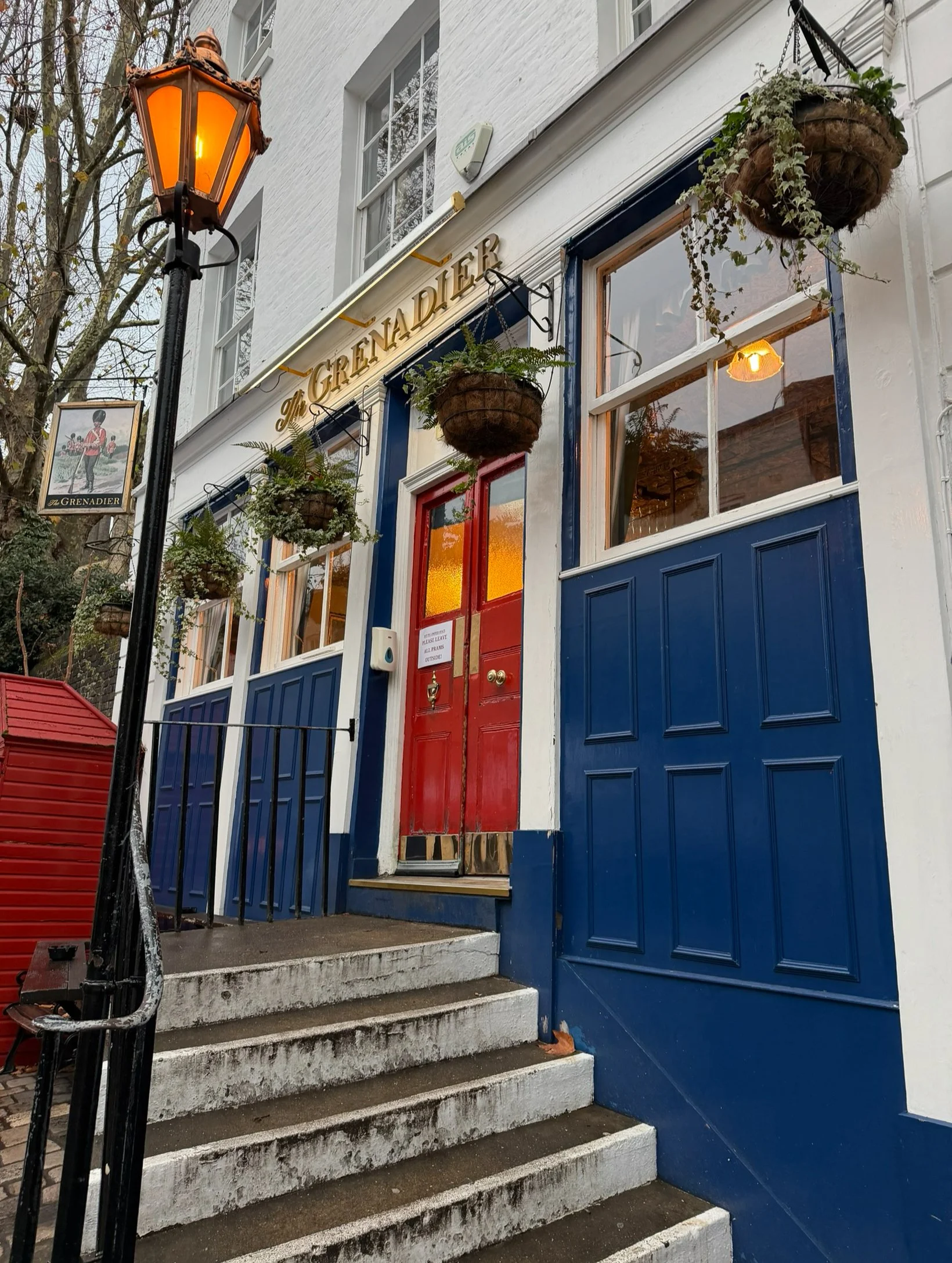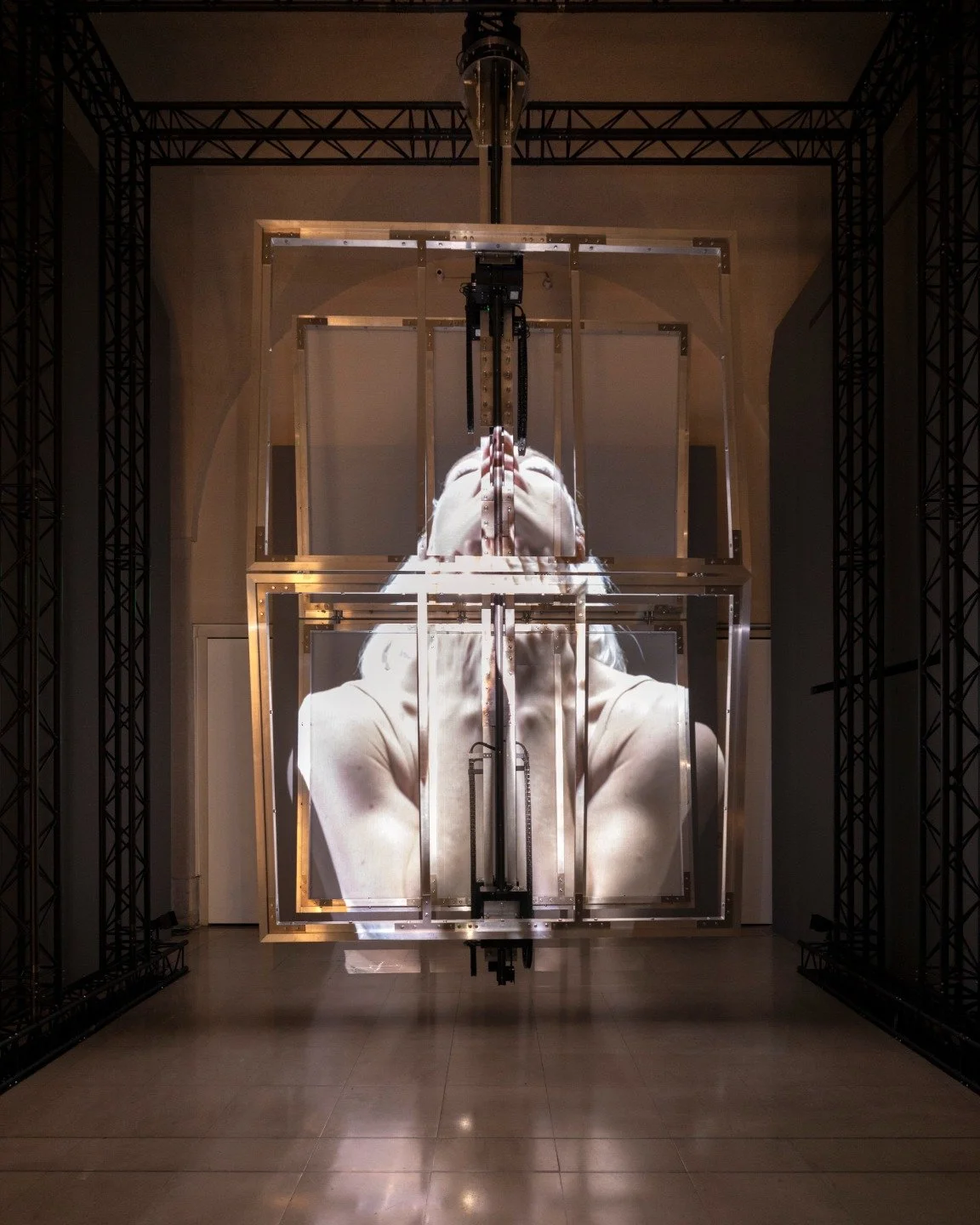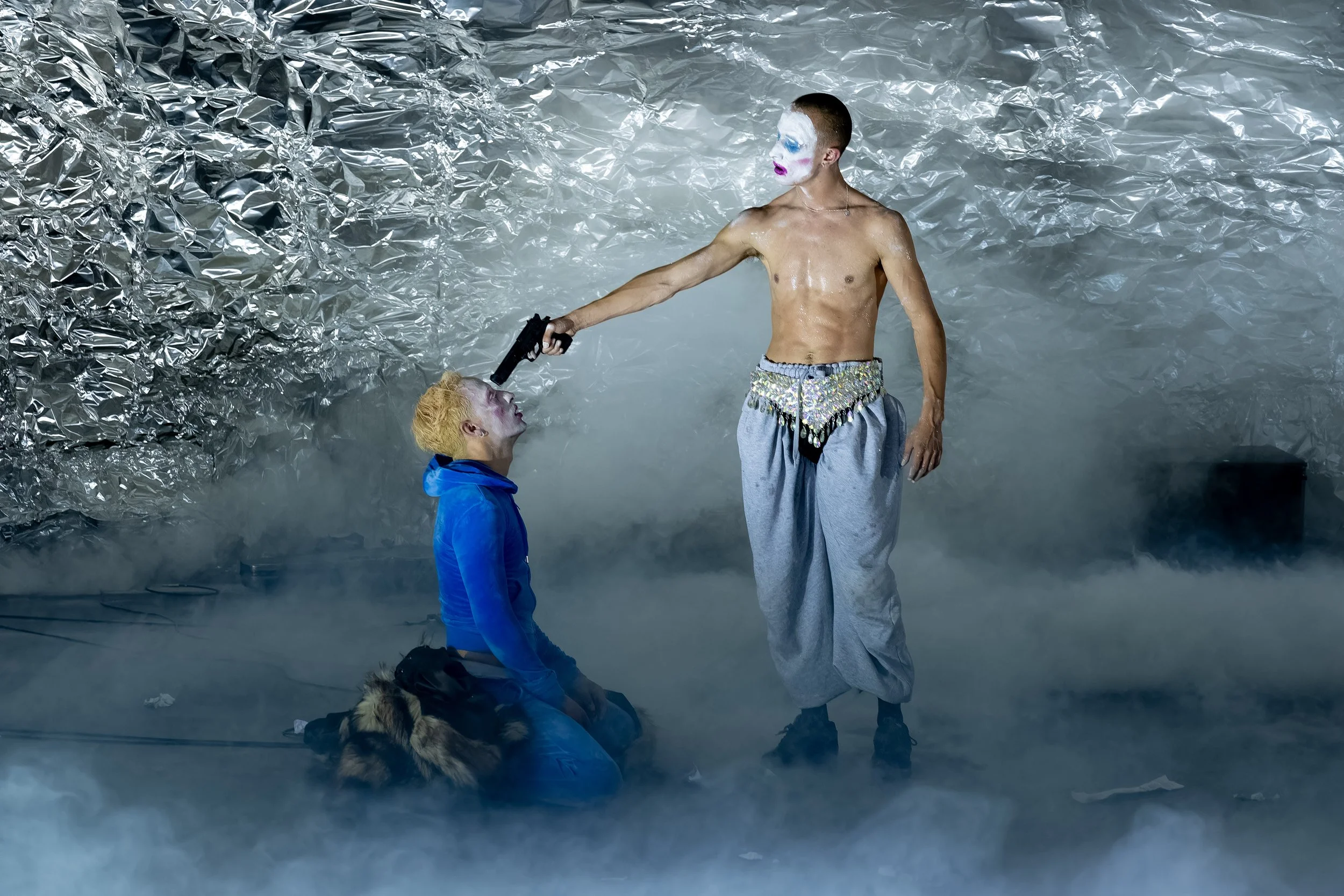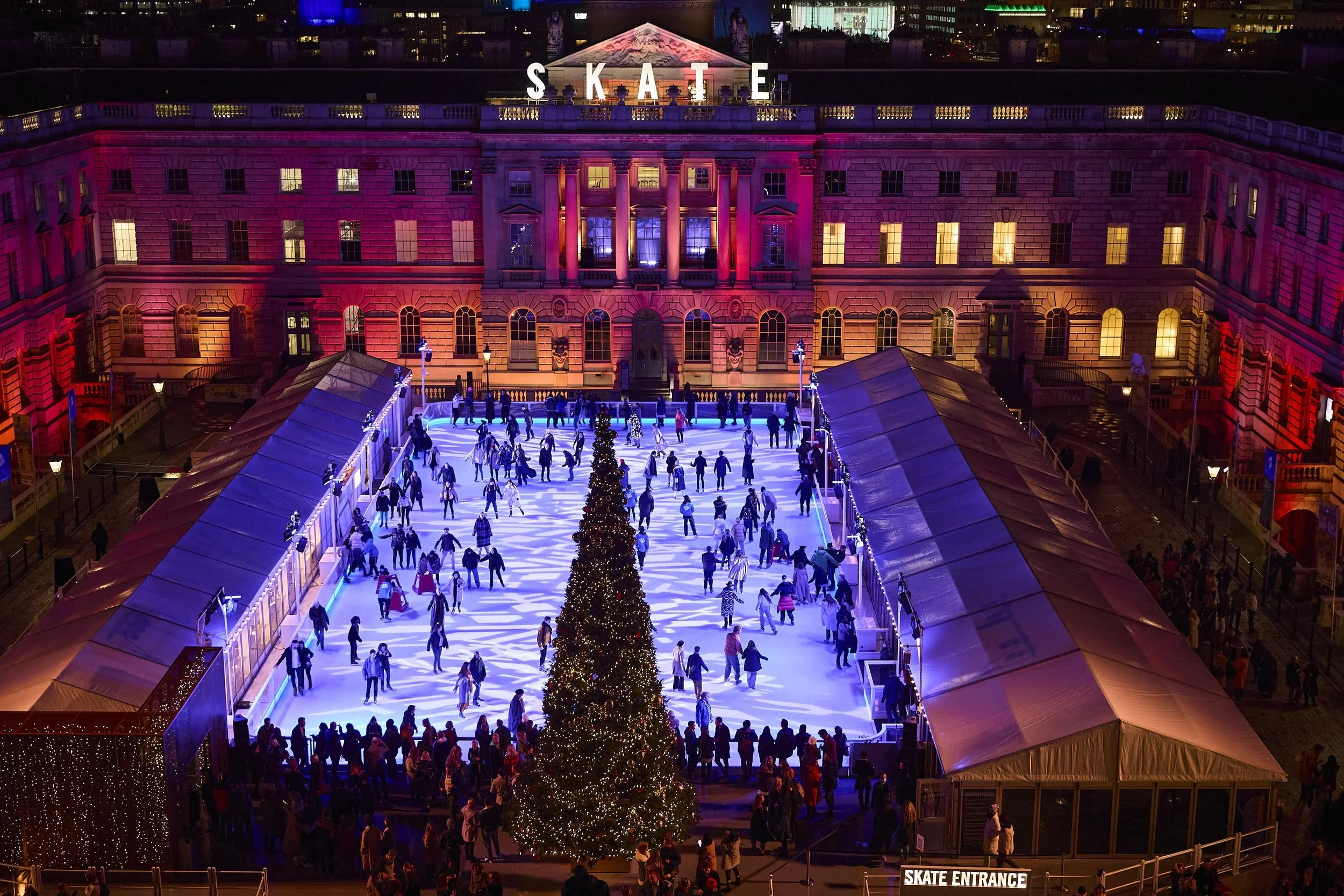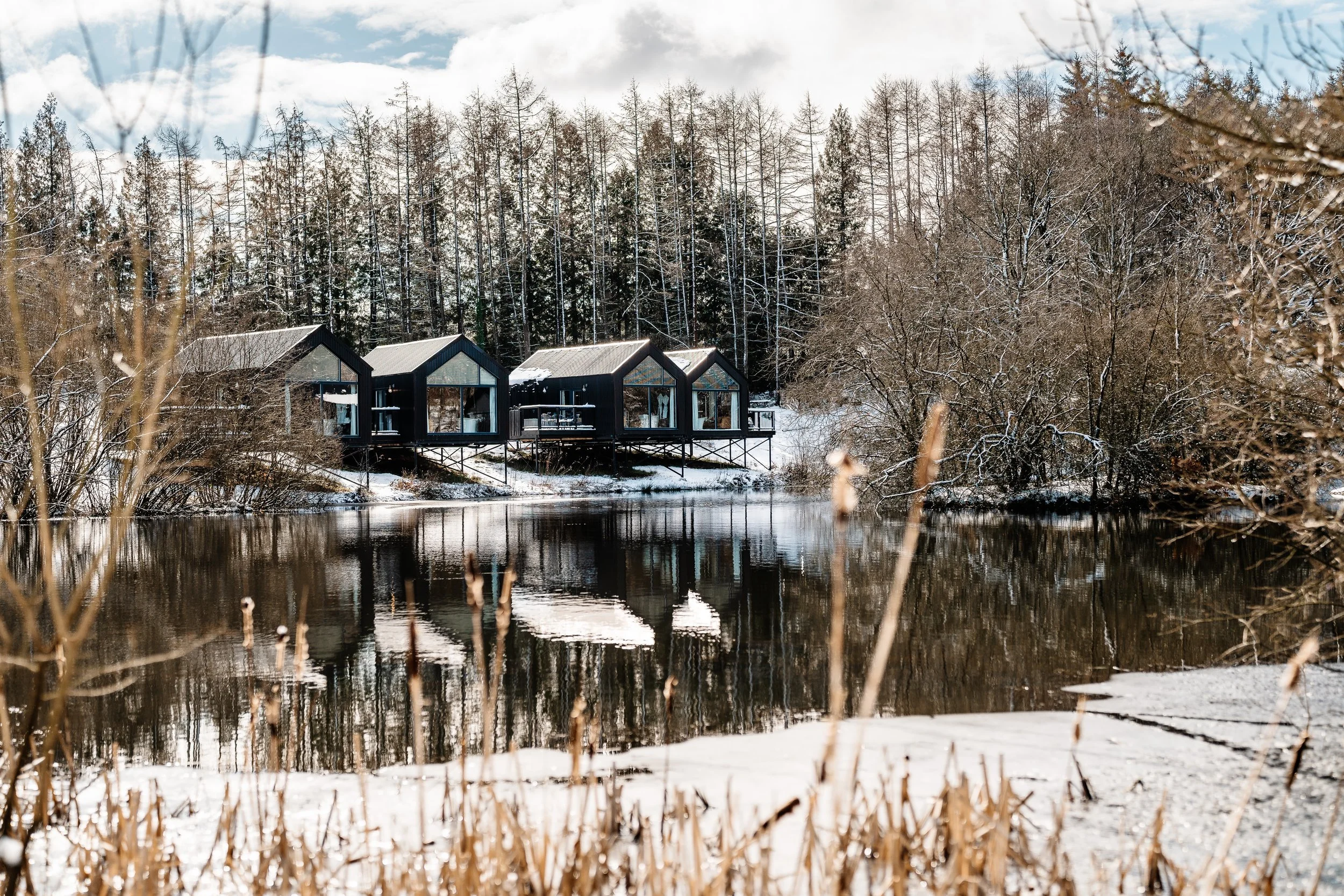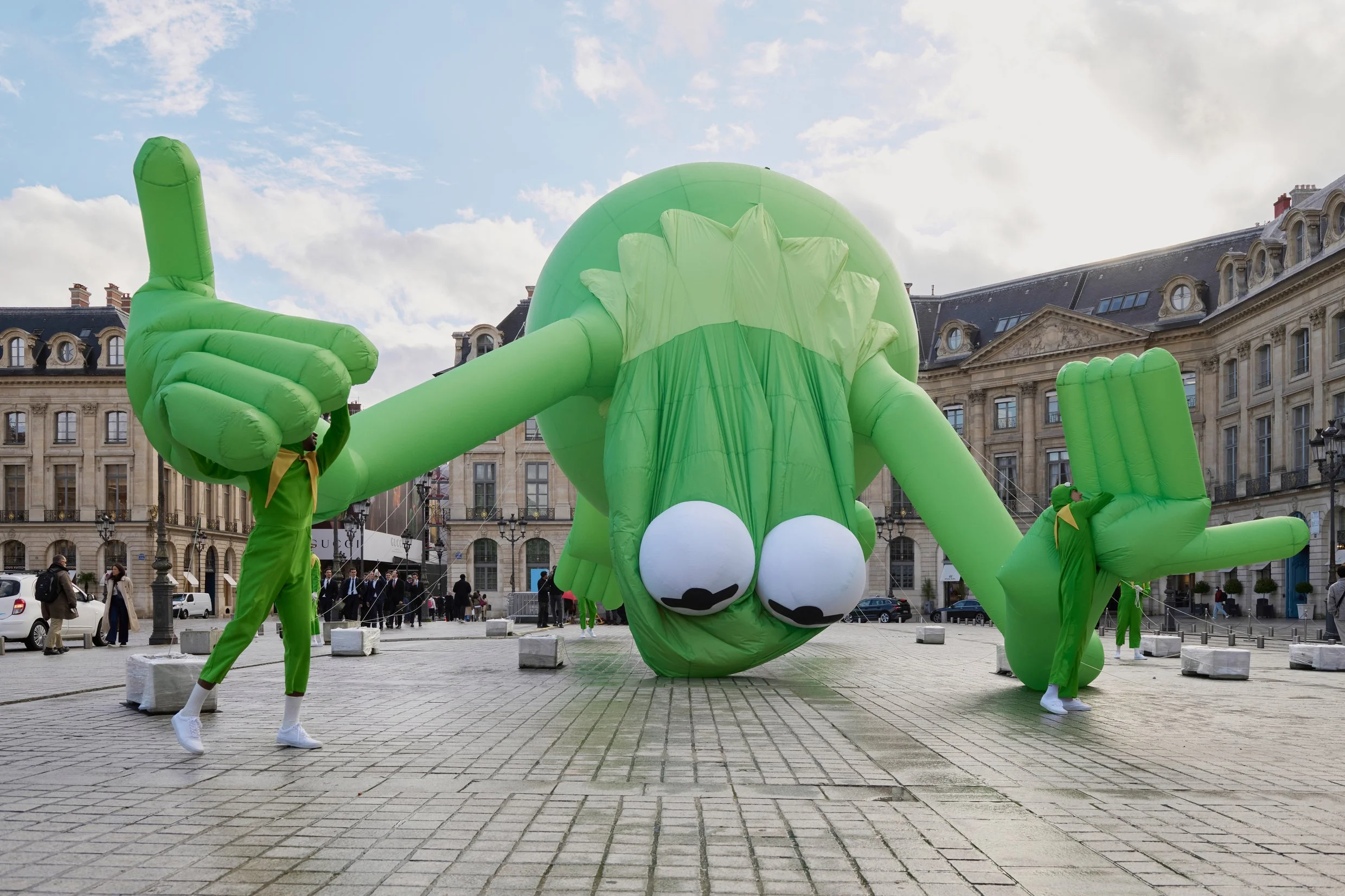In conversation with Charlotte Winifred Guérard
“Every day looks different in the studio, but one thing that gets me going is having several types of work going on at once.”
- Charlotte Winifred Guérard

Charlotte Winifred Guérard
For decades, Sir Paul Smith has championed art and artists – from a 30-year scholarship with the Royal Academy Schools to a collection of over 10,000 works of art exhibited in stores worldwide. Originals from major household names such as Damien Hirst, Lynette Yiadom-Boake and Banksy are showcased alongside works from early career artists in a globally rotating programme of showcases and selling exhibitions. To date, over 120 artists have exhibited their work around the world with Paul Smith, including existing and especially commissioned pieces. And in 2020, continuing his dedication to supporting early career artists, Paul Smith launched Paul Smith’s Foundation, with the goal of supporting early-career creative people in fashion, visual arts, and design.
It was the inaugural Director of Paul Smith’s Foundation, Martha Mosse, who first conceived of the International Art Prize, which is in partnership with Winsor & Newton and which remains one of the brand’s key initiatives. Designed to support the winning artists in building networks, growing audiences and aligning them with local figures of industry – whilst also providing an opportunity to freely create – the Winsor & Newton x Paul Smith’s Foundation International Art Prize is now in its second year. Six new artists have been chosen, this time in London, Nottingham, Copenhagen, Antwerp, New York and Shanghai.
Having enjoyed seeing her Royal Academy of Arts showcase in the summer, we were excited to have the opportunity to speak with the London winner, Charlotte Winifred Guérard, about her work and the prize. Charlotte recently completed her final year at the Royal Academy of Arts School as a Paul Smith’s Foundation scholar, and recent exhibitions include those at the RA, Coleman Project Space,Fitzrovia Gallery, Messums and Palmer Gallery. She has completed a number of prestigious residencies, including the Porthmeor Studio 5 residency, St Ives, with the Freelands Foundation.
Charlotte primarily makes paintings, exploring the ways these can be displayed or set into motion: In a machine on a boat, as a backdrop for dancers, or as screens on wheels. Her practice combines intuitive processes of experimenting with the material of paint, centring around the ways in which paintings can be viewed, activated and displayed. Her work explores the notions of painting in space and paintings in motion while the narrative of her images is influenced by her immediate surroundings, landscapes, the everyday and memory.
How did you begin your journey into art? Did you grow up in a creative environment?
I was always curious about making things, and I was lucky to have enthusiastic parents who encouraged me in that way. My grandad was a painter, and even though he passed away when I was young, his spirit was always felt along the way. My family are also great storytellers, so that fed into my own interest in narrations through images.
How about your more formal art education?
After completing a Baccalauréat Littéraire in France, I moved to the UK to do my Art Foundation at Bedford College, which was really good. Then I went on to Brighton University on the Painting Programme. There, I was taught partly by Oliver Gosling, who had worked in China for years and instigated my interest in the notion of space and the resonance of mark-making. I also made lifelong friends there who are still part of my creative peers today.
I had a couple of years working independently over the pandemic period and decided to apply to the Royal Academy of Arts Schools in 2022. This is where I completed my postgraduate programme earlier this year, after three years of an incredible educational experience.
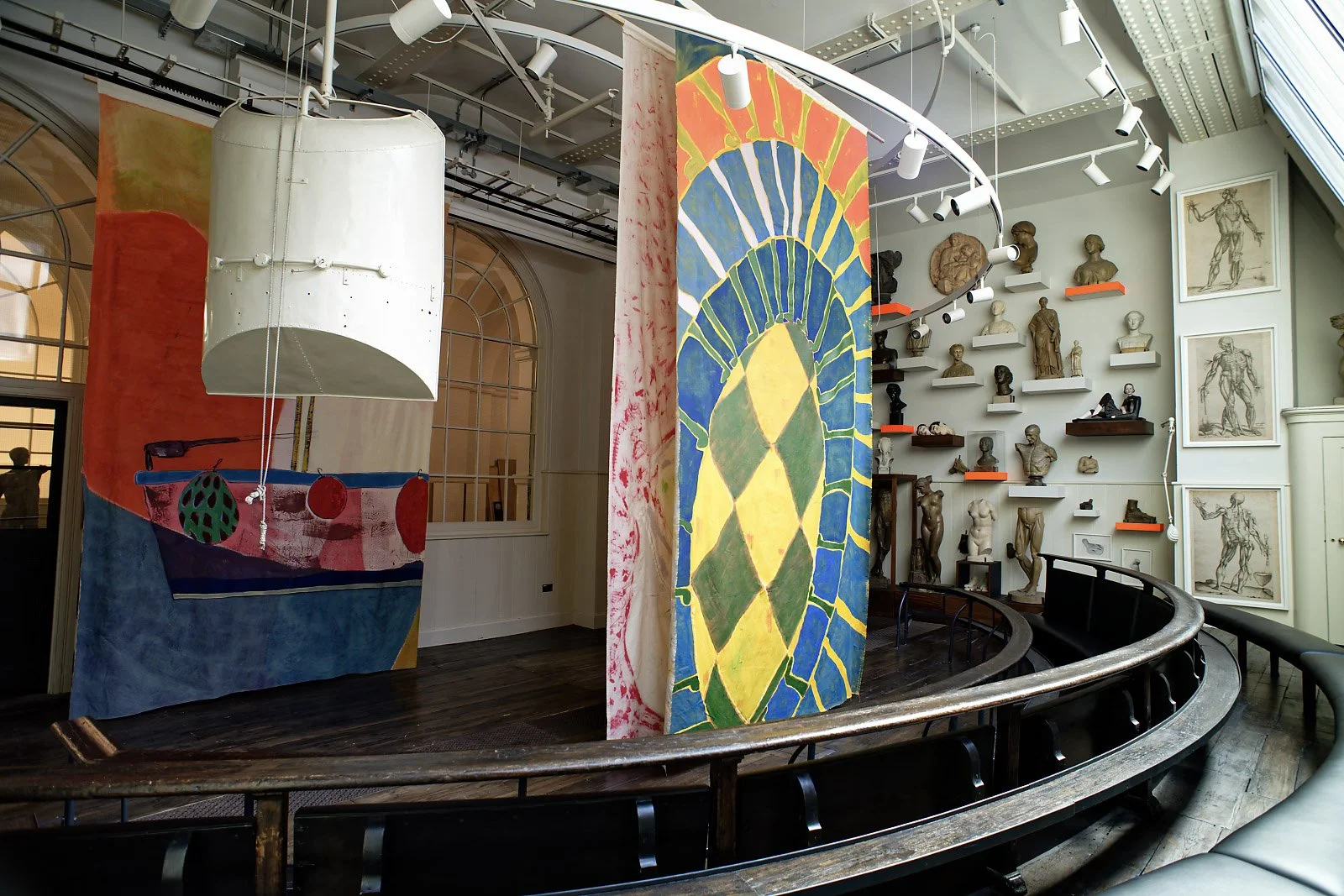
Royal Academy of Arts Schools Class of 2025 final exhibition. Installation shot, photography by Jon Archdeacon
What are your main inspirations?
First and foremost, my family, my loved ones, and artist friends. When it comes to creative inspirations, I draw a lot on “the things of life”; everything feels worth noticing. Small encounters, people, light, architecture, conversations, thoughts …
Most of these things are translated into drawings or images and inspire my practice.
Are there any artists (or any other types of creative) that you often look to?
I often go back to Helen Frankenthaler when I work "horizontally”. I look at Milton Avery, Pierre Bonnard or Claire Tabouret for colour; Jessicka Stockholder, Vivian Sutter, Hélio Oiticica for colour in space; and Pina Bausch, Joan Jonas or Merce Cunningham for movement. I also love the work of Lubaina Himid, Amy Sillman, Ithell Colquhoun, Ragnar Kjartansson, Patrick Heron, and the list goes on.

"Lobster legs/ An Unwanted past", 2024, Instillation shot Royal Academy of Arts". photography by Andy Keate
Can you speak about your creative process? What mindset are you usually in when making art? Do you have any studio rituals?
Every day looks different in the studio, but one thing that gets me going is having several types of work going on at once. At the moment I shift between meticulous coloured pencil drawings, oil paintings, a large canvas which requires me to work mostly from up a ladder, and maquettes for paper theatre. That way if one thing gets a little repetitive, I just have to turn around and get excited about the next project.
What does it mean to you to be the London winner for Paul Smith’s Foundation and Winsor & Newton International Art Prize?
I am really honoured to have been chosen as this year’s London winner. Paul Smith’s Foundation is an important patron of the arts, in all its forms, so it feels important to be rewarded by them. It is also amazing to be granted material support by Winsor & Newton, which will allow me to broaden my technical experimentations.
Tell us a bit about the work you will have on show at Paul Smith for the exhibition P.O.V – Defining Your Point of View.
My work in the show is a three-part oil painting on wooden panels. This is its description in the words of the writer Sam Della-Valle:
“Vue du train”
One hundred thousand shapes smudged below violet bushes. In the reflection in the window behind me a ghost reclines, and beyond her I watch only the present, abstracted by speed, and over-images of a past I long to hold, cheerfully.

Vue du train, 2025
In addition to materials and monetary winnings, part of the prize involves mentorship from one of the judges based in your city – in your case, Mark Rappolt, Editor in Chief of Art Review.How do you hope this guidance will support you going forward?
I am really looking forward to working with Mark Rappolt. Establishing mentoring relations with other professionals in the creative field feels crucial to me.
How important are prizes like this for young artists?
These prizes are fundamental to all artists really, as they offer an opportunity for support in funding artmaking and a platform for visibility. Championing creativity is especially poignant today when being an artist feels more and more difficult to sustain.

"Matthew's Boat", 2024 St Ives. photography by Zoe Gillett
The [Quick] #FLODown:
Any upcoming projects of note that you can discuss?
I am currently taking part in the Good Eye Projects residency alongside 5 other artists. We will be having an end-of-residency presentation in mid-January. I am also part of an exhibition at the Embassy of Iceland called the “Postcard for Seyðisfjörður”, a project organised by the h_a_r_d_p_a_i_n_t_i_n_g association.
What have been the most rewarding moments of your career thus far?
Probably working in Porthmeor Studios (St Ives) in the summer of 2024. This was a residency organised through the Freelands Foundation where I painted in Patrick Heron’s former studio for a month by the sea. I created a site-specific project which involved producing a 10 m long painting to fit into my Manual Scroll and making a short film of the process. It all felt like a dream, and a rewarding one. Not long after that, this body of work was showcased at Palmer Gallery for my first solo exhibition in London, entitled "Matthew's Boat".
What’s the best advice you have ever received?
Do the things which feel exciting, even if they seem weird (they’re often the best ones).
Who are you outside of the ‘office’?
I don’t think there is much distinction between how I am in and out of the studio. I like my routines: listening to French radio, FIP or France Culture, maybe with a little dance; having a cup of tea after lunch; and going for a walk. I spend most of my time off with my friends or family or swimming.
What do you love about London?
I love how you can always come across parts of town which you have never seen before and wonder how you could have missed out on it.
Charlotte Winifred Guérard’s work is presented alongside the other international winners in P.O.V – Defining Your Point of View, a group exhibition at Paul Smith Space, a permanent gallery housed beneath Paul Smith’s flagship London shop in the heart of Mayfair. Through diverse mediums and personal narratives, P.O.V invites audiences to engage with the powerful, individual points of view that exist around the world. The exhibition will run from 13 November 2025 to 12 January 2026.
For more information visit paulsmithsfoundation.org
Afra Nur Uğurlu is a visual artist and recent London College of Communication graduate whose practice bridges beauty, fashion, art, and cultural studies. In this interview, we discuss Hinterland, her zine exploring how the Turkish diaspora navigates and challenge es dominant representations…
Townsend Productions is marking the 50th anniversary of the Grunwick Strike (1976–1978) with the return of We Are the Lions, Mr Manager!, a powerful play written and musically directed by Neil Gore and directed by Louise Townsend. The production features Rukmini Sircar as Jayaben Desai. Ahead of the London run, we spoke to Neil Gore and Rukmini Sircar…
Danielle Brathwaite-Shirley lives and works between Berlin and London. Working predominantly in animation, sound, performance and video game development, and with a background in DIY print media and activism, the artist’s practice focuses on intertwining lived experience with fiction to imaginatively retell and archive the stories of Black Trans people…
Aaron Wright is a curator of contemporary performing arts, originally from the Midlands, and currently serves as Head of Performance & Dance at London’s Southbank Centre, a role he took on in 2023. Alongside his work at the Southbank Centre, he runs the queer performance club night Knickerbocker at The Yard Theatre in Hackney Wick…
Dr Lana Locke, Senior Lecturer at Camberwell College of Arts, University of the Arts London, is a multidisciplinary visual artist whose work spans sculpture, painting, drawing, video, and performance. Self-taught for over a decade before gaining postgraduate qualifications, Lana’s practice focuses on sustainability, materiality, and community engagement…
Judith Clark is a curator and fashion exhibition-maker, and currently Professor of Fashion and Museology at the University of the Arts London. She lectures on the MA Fashion Curation and is a founding Director of the Centre for Fashion Curation. From 1997 to 2002, she ran London’s first experimental fashion gallery in Notting Hill…
Lindokuhle Sobekwa is a South African photographer from Katlehong, Johannesburg. Since his first exhibition in 2013, his work on social issues and personal histories—like his photo essay Nyaope—has gained international recognition. A member of Magnum Photos, Sobekwa was recently awarded the 2025 Deutsche Börse Photography Foundation Prize for his project I carry Her Photo with Me…
Sol Bailey Barker is a multidisciplinary artist whose work explores the connections between ecology, mythology, and speculative futures. Through sculpture, sound, and installations, they blend ancient knowledge with emerging technologies to examine humanity’s relationship with the natural world…
Hanna Salomonsson is a London based Swedish ceramic artist. Following a career in landscape architecture, she re-trained in ceramics in 2018. She also holds a BA in Art History, and this combined with her landscape grounding provides a unique vantage point for her ceramic practice…
Lewis Walker is a London-born queer, non-binary movement artist. A former Great Britain gymnast and Acrobatic Gymnastics World Champion, they trained from age 6 to 21 before earning a degree in Contemporary Dance. Their work spans theatre, film, fashion, music, and the commercial sector. Walker continues to choreograph gymnastics competition routines for the Great Britain, Italian and French national teams…
Daniel is a curator-producer dedicated to the social impact of the arts and cross-sector collaboration. He is currently Creative Director & Chief Executive of Old Diorama Arts Centre (ODAC) in Euston, where he has strengthened the centre’s community connections amidst urban transformation…
Peter Bellerby is the founder of Bellerby & Co. Globemakers, a company renowned for its exquisite hand-crafted globes. Established in 2010, the company specialises in meticulously designed pieces that showcase exceptional craftsmanship, positioning Bellerby & Co. as a leader in the globe-making industry…
Gabriele Beveridge is known for her sculptural and conceptual practice that combines materials as diverse as hand-blown glass, photo chemicals, and found images…
Robyn Orlin is a South African dancer and choreographer born in Johannesburg. Nicknamed in South Africa "a permanent irritation", she is well known for reflecting the difficult and complex realities in her country. Robyn integrates different media into her work (text, video, plastic arts) to she investigates a certain theatrical reality which has enabled her to find her unique choreographic vocabulary…
Katrina Palmer, an artist known for exploring materiality, absence, and dislocation, recently spoke to us following her year-long residency at the National Gallery about her exhibition The Touch Report…
Enej Gala is an artist who splits his time primarily between London and his hometown of Nova Gorica, Slovenia. A graduate of the Academy of Fine Arts in Venice and the Royal Academy Schools (2023), Gala first gained our attention with Neighbour’s Harvest, an installation that cleverly combined puppetry and conceptual art…
David Ottone is a Founding Member of Award-winning Spanish theatre company Yllana and has been the Artistic Director of the company since 1991. David has created and directed many theatrical productions which have been seen by more than two million spectators across 44 countries…
Darren Appiagyei is a London-based woodturner whose practice embraces the intrinsic beauty of wood, including its knots, cracks, bark, and grain. Highly inspired by Ghanaian wood carving, Darren explores raw textures and new woods in his work…
Huimin Zhang is an artist specialising in 22K gold, known for her innovative craftsmanship. She combines various cultural techniques, including filigree, engraving, and European gold and silver thread embroidery, to create unique works…
Akinola Davies Jr. is a BAFTA-nominated British-Nigerian filmmaker, artist, and storyteller whose work explores identity, community, and cultural heritage. Straddling both West Africa and the UK, his films examine the impact of colonial history while championing indigenous narratives. As part of the global diaspora, he seeks to highlight the often overlooked stories of Black life across these two worlds.
Hannah Drakeford is a London-based interior designer known for her bold and colourful interiors. She transitioned from a 21-year retail design career to interior design, and has gained popularity on social media where she now shares creative upcycling tutorials and encourages individuality in home decor…
Shula Carter is an East London-based creative with a background in contemporary, ballet, and modern dance. She trained at the Vestry School of Dance and later at LMA London, where she developed skills in commercial, hip hop, and tap dance, alongside stage and screen performance…
Dian Joy is a British-Nigerian interdisciplinary artist whose work delves into the intersections of identity, digital culture, and the fluid boundaries between truth and fiction. Her practice is rooted in examining how narratives evolve and shape perceptions, particularly in the digital age.
Dian Joy is a British-Nigerian interdisciplinary artist whose work delves into the intersections of identity, digital culture, and the fluid boundaries between truth and fiction. Her practice is rooted in examining how narratives evolve and shape perceptions, particularly in the digital age.
John-Paul Pryor is a prominent figure in London’s creative scene, known for his work as an arts writer, creative director, editor, and songwriter for the acclaimed art-rock band The Sirens of Titan…
Jim Murray is an actor, director, conservationist and artist known for Masters of Air (2024) and The Crown (2016). Murray first came to prominence as an artist in 2023 with his acclaimed inaugural exhibition In Flow, where his dynamic abstract paintings were hung in conversation with John Constable’s The Dark Sid…
Anthony Daley is an abstract expressionist painter known for his vibrant, large-scale works that explore beauty through intense colour and light. His art bridges the past and present, drawing inspiration from the Old Masters as well as diverse sources like literature, science, poetry, and nature.
Rachel Kneebone’s work explores the relationship between the body and states of being such as movement, stasis, and renewal. Through her porcelain sculptures, she examines transformation and metamorphosis, reflecting on what it means to inhabit the body and be alive…
Saff Williams is the Curatorial Director at Brookfield Properties, bringing over fifteen years of experience in the arts sector…
Sam Borkson and Arturo Sandoval III, the acclaimed LA-based artists behind the renowned collective "FriendsWithYou," are the creative minds behind "Little Cloud World," now on display in Covent Garden. During their recent visit to London, we had the privilege of speaking with them about their creative process and the inspiration behind this captivating project.
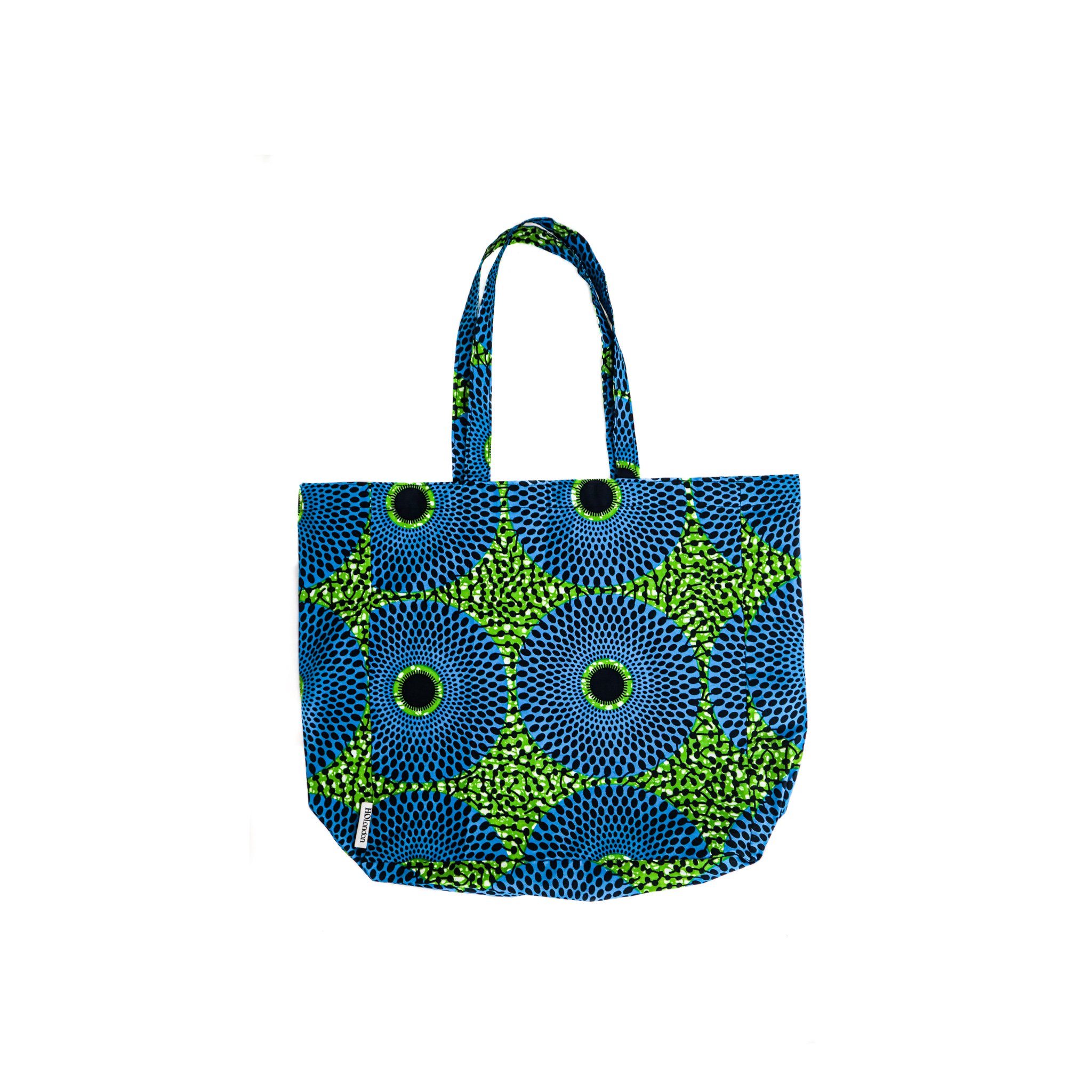
The Southbank Centre has announced Classical Mixtape: A Live Takeover, a one-night-only, multi-venue event taking place in February 2026, bringing together more than 200 musicians from six orchestras across its riverside site…
This week in London features late-night Christmas shopping on Columbia Road, festive wreath-making workshops, live Brazilian jazz, mince pie cruises, theatre performances, art exhibitions, a Christmas disco, and volunteering opportunities with The Salvation Army.
Discover London’s unmissable 2026 fashion exhibitions, from over 200 pieces of the late Queen’s wardrobe at The King’s Gallery to the V&A’s showcase of Elsa Schiaparelli’s avant-garde designs and artistic collaborations…
Marking her largest UK project to date, Sedira’s work will respond to the unique architectural and historical context of the iconic Duveen Galleries, offering audiences an experience that merges the political, poetic, and personal…
This week in London, enjoy festive events including Carols at the Royal Albert Hall, LSO concerts, designer charity pop-ups, late-night shopping, art exhibitions, film screenings, foodie experiences, last-chance shows, and volunteer opportunities across the city…
Explore Belgravia this Christmas with a festive pub crawl through London’s most charming historic pubs, from The Grenadier’s cosy mews hideaway to The Nags Head’s quirky classic tavern…
From the joys of Christmas at Kew to the lively Smithfield meat auction, and from major concerts and ballets to intimate workshops and family-friendly trails, the city offers an extraordinary mix of experiences. This guide brings together the very best of Christmas in London…
This guide highlights some of the must-see art exhibitions to visit over the festive period in London, including the days between Christmas and New Year’s. From major retrospectives of international masters such as Kerry James Marshall, Wayne Thiebaud, and Anna Ancher, to engaging contemporary works by Danielle Brathwaite-Shirley, Jennie Baptiste, and Tanoa Sasraku…
London’s cultural scene, a gallery or museum membership is the perfect alternative to another pair of socks. From unlimited access to exhibitions and exclusive events to discounts in shops and cafés, these memberships offer experiences that can be enjoyed throughout the year, while also supporting the vital work of arts organisations…
Your guide to London’s can’t-miss events this week, 17–23 November 2025, from Cabaret Voltaire live at ICA to Ballet Shoes at the National Theatre and The Evolution of UK Jazz at the Barbican…
Charlotte Winifred Guérard is a London-based artist and recent graduate of the Royal Academy of Arts School, where she was recognised as a Paul Smith’s Foundation scholar for her artistic achievement. Her work has been exhibited at the Royal Academy, Coleman Project Space, Fitzrovia Gallery, Messums and Palmer Gallery, and she has completed prestigious residencies including…
This week in London, you can enjoy festive ice skating, Christmas lights, jazz and classical concerts, and a range of art exhibitions. Highlights include Skate at Somerset House, Christmas at Kew, the EFG Jazz Festival, and the Taylor Wessing Photo Portrait Prize 2025…
From the 6th to the 9th of November, the leading West African art fair Art X Lagos celebrates its 10th birthday at the Federal Palace on Victoria Island. Founded by Tokini Peterside-Schwebig in 2016, the fair has become an unmissable event in the global art calendar, attracting galleries from over 70 countries and participants from 170 countries since its launch…
If you’re after something bold, queer and completely uncategorisable this November, you need to know about KUNSTY, the Southbank Centre’s brand new four day performance series running from 5-8 November 2025…
London’s most beloved Christmas activity is back. As festive cheer returns to the city, with twinkling lights and the scent of mulled wine drifting through the air, for many Londoners and visitors from further afield, nothing quite captures the spirit of the city at Christmas like strapping on a pair of skates and stepping onto the ice…
As the crisp autumn air settles over London, the iconic gardens of Berkeley Square are once again hosting one of the most anticipated gatherings in the art and antiques world: the LAPADA Fair 2025, running from 28 October to 2 November…
November is a lively time to be in London, with the festive season in full swing and the city buzzing with events. From skating at Somerset House to Christmas lights switch-ons and festive markets like the Southbank Centre Winter Market, there are plenty of ways to embrace the holiday spirit. Beyond the seasonal festivities, London’s cultural calendar is brimming with art, music, and performance…
As far as weekend getaways go, this 70-acre estate offers a peaceful country escape with all the best elements of a traditional hotel experience. Staffordshire, arguably, is not yet on the map for luxury and leisure but set in the heart of the beautiful Staffordshire Moorlands, The Tawny surely is a beacon of things to come…
Art Basel Paris returns to the Grand Palais for its second edition from 24–26 October 2025, bringing together 206 leading galleries from 41 countries and territories. Below is our guide to seven artists not to miss at this year’s edition, each presenting distinctive work through their galleries…
Art Basel Paris 2025’s Public Programme turns the city into a stage for contemporary art, placing bold, large-scale works in streets, courtyards, and cultural landmarks - all free to visit. From a dreamy opera of 30 surreal figures at Palais d’Iéna to a colossal Kermit the Frog balloon looming over Place Vendôme, here is our guide to five standout works from the Art Basel Public Programme that you simply cannot miss…
Frieze London 2025 returns to Regent’s Park with a dynamic mix of emerging and established galleries, reaffirming the city’s creative pulse. Highlights include Esther Schipper’s dreamlike works by Sarah Buckner, Gagosian’s vibrant installation by Lauren Halsey, and Pace’s meditative paintings by William Monk. From Do Ho Suh’s ethereal fabric architectures at Lehmann Maupin…
Paris launches into its own spectacular celebration of art each October, transforming the city into a hub for collectors, curators, and cultural enthusiasts. From the grandeur of Art Basel Paris at the newly renovated Grand Palais to the focused energy of Paris Internationale, OFFSCREEN, AKAA and Menart, each fair contributes something unique to the city’s vibrant art scene.
British Ceramics Biennial is back and better than ever. Running until 19 October 2025, the dynamic programme of free exhibitions, screenings, talks and events is proving a hit with both locals and critics…and just an hour and a half’s train away from London, it’s well worth a day trip…
Echoes of Migration is the flagship summit to launch new not-for-profit platform Art Voyage this autumn. Echoes of Migration officially inaugurates Art Voyage’s innovative, itinerant cultural programme…and gears us up for what is in store for the Art Voyage Biennial….
Betty Ogundipe (b. 2001) is a multidisciplinary artist of Nigerian heritage whose work explores resilience, femininity, and the power of love and resistance. Her debut solo exhibition, LOVE/FIGHT at Tache Gallery…
The V&A’s Marie Antoinette Style, sponsored by Manolo Blahnik, is being hailed as the first landmark exhibition in the UK devoted to France’s most infamous Queen of Fashion. It is a glittering journey through silk, flamboyance and legacy….
Malta is fast becoming one of the Mediterranean’s hottest destinations, offering sun-soaked beaches into October, a thriving arts and culture scene, and stunning architecture and landscapes…

